doing-做状语-公开课
- 格式:ppt
- 大小:767.52 KB
- 文档页数:49
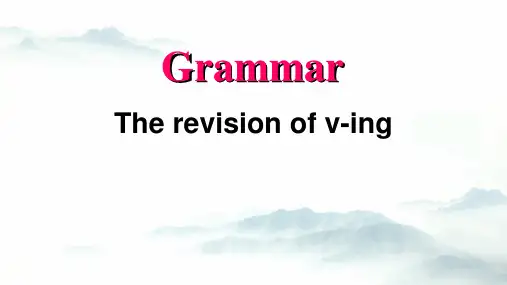

Unit 5 Grammar :Revising the –ing form.♥学习目标:(1) 动词-ing形式作状语可表示:时间、原因、条件、让步、伴随等。
(2) 动词-ing形式的完成式:主动:Having + p.p. …, 主语+ 谓语被动:(Having been) + p.p. …, 主语+ 谓语【重点难点】灵活应用V-ing作状语一.第一关:判断Ving 在句中的成分1.The child ran out of the room, laughing and talking.2.Seeing nobody at home, Linda decided to leave them a note.3.If having more time, we can do it better.4.Though living near her house,I seldom see her .5.The child fell, striking his head.分词作状语表示时间、_____\______\____\______\______,其逻辑主语通常与句子的主语______,Ving表示的动作与主语之间含有逻辑上的_____关系。
第二关:把V-ing改成状语从句做状语ing out of my house, I saw the volcano erupting.2.Waking up in the middle of the might, She saw her room was as bright as day.3. He sat on the sofa, watching TV.(=He sat on the sofa ____ ______TV.)4. Though having little money, he always helped the poor.(=_____ ____ ________little money, he always helped the poor.5.Being too fat, he couldn’t join the army.6.Having more time, I will do the work much better.归纳:V-ing做状语,其前往往可以加-------------------------------------等连词,构成“连词+V-ing”结构。
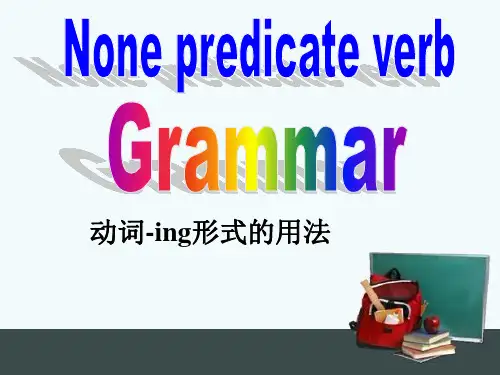

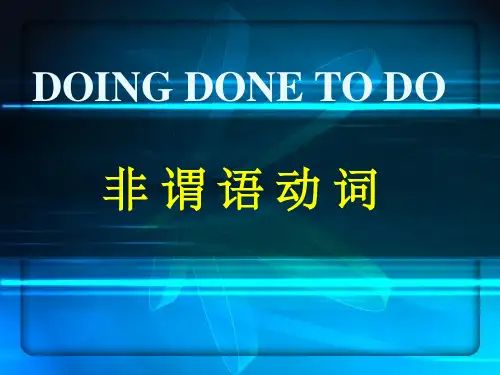

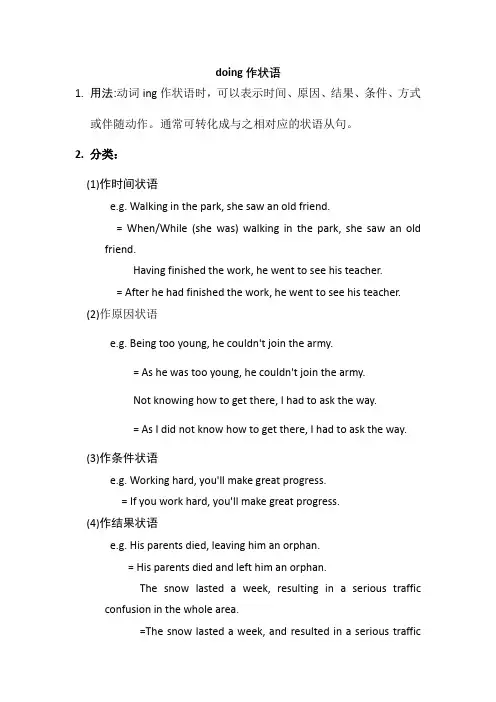
doing作状语1.用法:动词ing作状语时,可以表示时间、原因、结果、条件、方式或伴随动作。
通常可转化成与之相对应的状语从句。
2.分类:(1)作时间状语e.g. Walking in the park, she saw an old friend.= When/While (she was) walking in the park, she saw an old friend.Having finished the work, he went to see his teacher.= After he had finished the work, he went to see his teacher.(2)作原因状语e.g. Being too young, he couldn't join the army.= As he was too young, he couldn't join the army.Not knowing how to get there, I had to ask the way.= As I did not know how to get there, I had to ask the way.(3)作条件状语e.g. Working hard, you'll make great progress.= If you work hard, you'll make great progress.(4)作结果状语e.g. His parents died, leaving him an orphan.= His parents died and left him an orphan.The snow lasted a week, resulting in a serious traffic confusion in the whole area.=The snow lasted a week, and resulted in a serious trafficconfusion in the whole area.注意:动词ing形式与不定式均可作结果状语,区别是:动词ing 形式表示顺其自然、意料之中的结果,而不定式则表示不愿看到的、出人意料的结果。

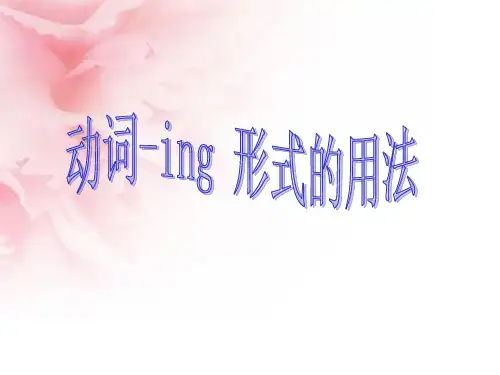
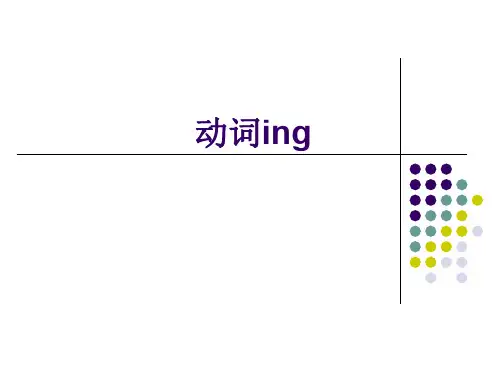

doing的用法教案教学目的:使学生完全掌握动词-ing的用法知识点:-ing的形式及根本用法,主动语态-ing完成式的根本用法,被动语态-ing 完成式的根本用法,被动语态-ing 一般式的根本用法,-ing形式的复合结构, -ing 形式与动词不定式在句中作主语、表语、宾语、定语、宾语补足语、状语时的区别重点:-ing的根本用法,主动语态-ing完成式的根本用法,被动语态-ing完成式的根本用法,被动语态-ing 一般式的根本用法,-ing形式的复合结构,-ing形式与动词不定式在句中作主语、表语、宾语、定语、宾语补足语、状语时的区别教学进程:一、-ing的形式:-ing有一般式和完成式。
及物动词的-ing还有主动语态和被动语态,而不及物动词的-ing那么没有被动语态。
现在以及物动词make和不及物动词go为例,将其-ing各种形式列表如下:二、-ing形式的根本用法。
1、作主语。
如:Seeing is believing.百闻不如一见。
Talking is easier than doing.-ing作主语时,如果其结构较长,可用it作形式主语,而将作主语的.ing后置。
如:It isn't much good writing to them again.It's no use waiting here.2、作表语。
如:Her job is washing and cooking.My hobby is collecting stamps.①作及物动词的宾语。
She likes drawing very much.;②作某些动词短语的宾语。
Mary is thinking of going back to New York.;③do+限定词(my, some, any, the等)+ -ing,表示"做…事”之意,如:We often do our cleaning on Saturday afternoon.Will you do any shopping on Saturday this afternoon?④作介词的宾语。